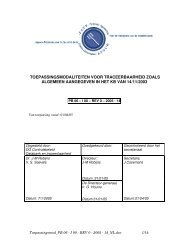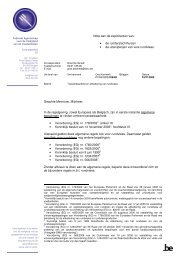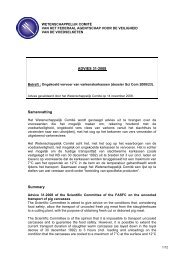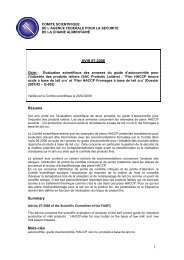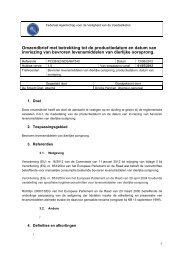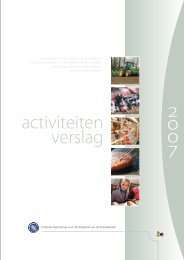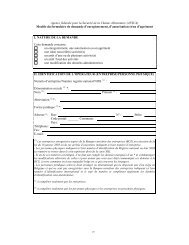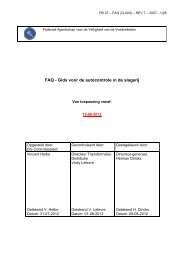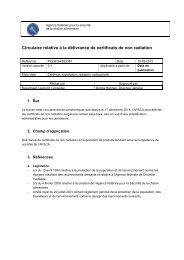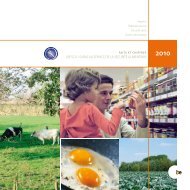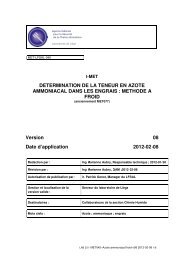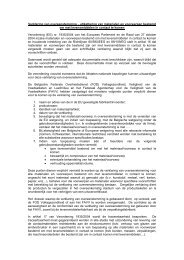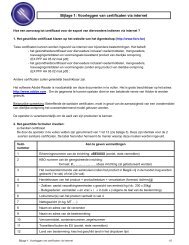Document - FAVV
Document - FAVV
Document - FAVV
- No tags were found...
You also want an ePaper? Increase the reach of your titles
YUMPU automatically turns print PDFs into web optimized ePapers that Google loves.
Evaluation of immunoassay kits for determination of ochratoxin A in cerealsFalse positives due to cross-reactivity and/or matrix effect were last year during the evaluation of DON kitsidentified as a major problem.The same is true for OTA kits. As mentioned in the conclusion of the administrative evaluation, they are competitivecompared to reference methods in terms of cost efficiency given their false positive rate is well controlled. Aspositive labeled samples have to be double checked using a reference method, a too high false positive rate wouldcompromise their cost effectiveness. Their strong point lies clearly in their ability to screen samples rapidly in-situ.We also found that most kits biased somewhat to the low side during the assessment of accuracy.The Rosa kit of Charm was the most robust test in terms of matrix effect and limit of detection. There is no need fora calibration curve and the number of manipulation steps is very limited. This gives it not only the edge in terms oflabor cost but it is the only one suitable for use in the field.The kit of R-Biopharm scored very well in terms of cross-reactivity, matrix effect and LOD. Of the ELISA kits itwas the easiest and fastest to use. Romerlabs: biases somewhat to the low side. It also needs more manipulation stepsthan the kit of R-Biopharm. The Europroxima kit suffered somewhat from cross-reactivity for OTB. The kit hadsome troubles to deal with oats. The main drawback though was the complicated extraction procedure. Although itmight lead to a cleaner extract the large number of clean-up steps makes it more labor intensive.This exercise will be repeated the following next year for Aflatoxin kits. Focus will lie on total aflatoxin in cereals.For the cross-reactivity it would be more meaningful to extract matrices spiked with the possible cross-reactants.Measuring cross-reactivity on spiked solvent or spiked matrix extracts might be interesting from a scientific point ofview; they are irrelevant if the possible cross-reactant is not extracted by the solvent. Assessing the accuracy of thestandards will not be repeated, this would only make sense if the kits came from different lot numbers which was notthe case.Recovery should be interesting to evaluate; not only are explicit legal limits set for mycotoxin recovery, this couldalso explain why accuracy biases somewhat negatively.CODA-CERVA | Conclusion and future prospects 5-67




